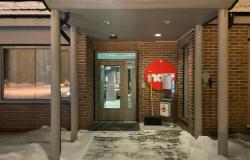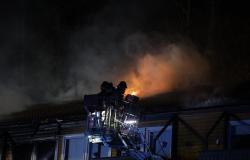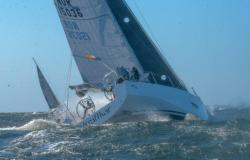A well-functioning emergency room and municipal office a collaboration post coordinated with the development of the local hospital function at UNN in Tromsø could be an important contribution to good interaction. The problem of corridor patients ready for discharge, which is a financial predicament for the municipality, a burden for the hospital and a burden for the patients, can be solved by closer cooperation.
Chairman of Helse Nord. Renate Larsen, invited in a column in iTromsø on 18 March for strengthened interaction between the municipalities and the health institutions. Quite correctly, she points out that insufficient interaction can affect the patients and lead to incorrect use of resources. She concludes by encouraging the municipalities to come up with concrete proposals for geographical coordination and co-location of health and care services with joint professional and administrative management.
Recently became Tromsø municipality its plans to build a new emergency department on the underside of the existing emergency department were torpedoed by UNN, because the use of the helicopter landing pad would be prevented during the construction process. At the same time, UNN has long wanted to expand the C-wing to make room for the Neonatal Intensive Care Unit and more operating theatres. The same helipad also needs to be lifted onto the roof of the new C-wing to accommodate the new SAR Queen rescue helicopters.
The best for both parties will be to have the C-wing built with room for both a modern emergency room and the above-mentioned functions. In addition, we must think new and forward-looking!
Patients ready for discharge are defined based on their need for a municipal service after they have been treated at the hospital. It is the hospital doctors who today define what should be the limit for “ready for discharge”, often without further knowledge of what municipalities are able to offer these. In Tromsø, the municipal services are often not sufficient. At the same time, a significant proportion of discharged patients are readmitted within a week, and the tendency is increasing. We would argue that this is a sign that the local hospital function at UNN Tromsø has been under-prioritised and that the capacity to look after the elderly with chronic conditions is too small. With a sideways glance at the changes we see in the demographics, we can determine that the problem will increase in the future.
Today, Tromsø municipality operates an immediate help post at Helsehuset which helps to receive newly discharged patients who are not ready for the transition to home. Patients from the emergency department, who would otherwise have been admitted, are also accepted. It often happens that the Health Center receives patients directly from UNN’s emergency department, without having been in contact with the emergency department. This helps to create cooperation problems, as the Health Center does not know the patient well enough on arrival, or the patients are thought to be too unwell and should have been admitted to UNN. All in all, this ØHD post at Helsehuset must be said to be a great success, but is nowhere near enough.
To solve the challenge of interaction around patients ready for discharge, we propose a somatic collaboration post (“intermediate department”) with contributions from both Tromsø municipality and the hospital. You can also consider inviting the other municipalities in the local hospital area to UNN Tromsø. This department can be run jointly by the municipality and the health company, and be coordinated with a new emergency room in connection with the C-wing.
There are several advantages to one such department. It is possible to achieve a faster transfer of patients ready for discharge from the hospital wards, and reduce the number of corridor patients, who are both unworthy of the patients and cause difficulties for the operation and finances of the hospital. At the same time, the municipality’s costs for daily fines for patients ready to be discharged can be reduced.
A cooperative post/local hospital department will be able to help reduce length of stay without increasing the number of hospital readmissions. If the hospital and the municipality collaborate on a project where patients can be treated in the discharge phase from the specialized records, we can achieve a smooth transition from hospitalization to the municipal services. For patients with complicated and uncertain courses, the proximity of the specialists at UNN will enable interdisciplinary assessment of patients whose health deteriorates after discharge to the local hospital ward. Many patients will be able to be stabilized on this post and avoid being admitted to the specialized wards, thus relieving these.
We will also be able to reduce the expenses for ambulance/transport and the use of healthcare resources to re-admit people who deteriorate after discharge in the current situation. In this way, a better flow of patients will be achieved to a greater extent and the municipal services will be involved at an early stage.
The totality of cooperative funds, municipal investments and the money set aside for the helicopter base will make UNN’s construction of the C-wing cheaper and thus possible to realize faster. The government should also step in here – this will be an unprecedented project on a national basis!
Tromsø municipality will then finally get an emergency room adapted to the size of the city, the needs of the patients and the working conditions of the employees. The home services will have better capacity to care for those users who are healthy enough to be cared for there. The hospital will finally get the much-needed intensive care unit, increased operating theater capacity, as well as a helipad adapted to the new SAR Queen helicopters. And with a collaboration department between UNN and the municipalities, we will have a win-win situation for all parties, both financially and health-wise. But not least: inhabitants will experience a better patient course with a higher degree of interaction, dignity and predictability.
Renate Larsen, we are ready to discuss this project – come and meet us, and together we will create the healthcare system of the future!






